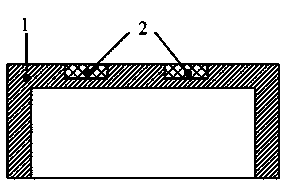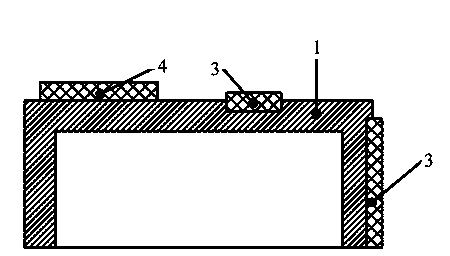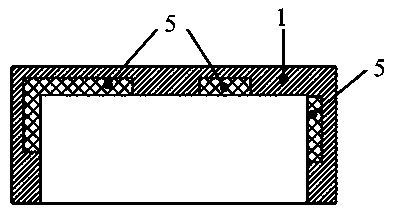Antenna radiator made of conductive high-molecular material and manufacturing method
A technology of conductive polymers and antenna radiators, applied in the structural form of radiation elements, etc., can solve the problems of large equipment investment, long production cycle, high production cost, etc., and achieve the effects of improving efficiency, low cost, and reducing loss
- Summary
- Abstract
- Description
- Claims
- Application Information
AI Technical Summary
Problems solved by technology
Method used
Image
Examples
Embodiment Construction
[0030] The present invention will be described in detail below in conjunction with the accompanying drawings.
[0031] The method for making an antenna radiator from a conductive polymer material of the present invention comprises the following steps:
[0032] (1) Injection molding a non-conductive polymer material bracket in the mold, forming a number of grooves on the non-conductive polymer material bracket, these grooves can be distributed on the outside of the non-conductive polymer material bracket, or distributed On the inside of the non-conductive polymer material stent, it can also be distributed on the outside and inside of the non-conductive polymer material stent;
[0033] (2) The conductive polymer material is injected into the groove of the non-conductive polymer material bracket to make the antenna radiator. The conductive polymer material may not protrude from the non-conductive polymer material support, or may protrude from the non-conductive polymer mat...
PUM
 Login to View More
Login to View More Abstract
Description
Claims
Application Information
 Login to View More
Login to View More - R&D
- Intellectual Property
- Life Sciences
- Materials
- Tech Scout
- Unparalleled Data Quality
- Higher Quality Content
- 60% Fewer Hallucinations
Browse by: Latest US Patents, China's latest patents, Technical Efficacy Thesaurus, Application Domain, Technology Topic, Popular Technical Reports.
© 2025 PatSnap. All rights reserved.Legal|Privacy policy|Modern Slavery Act Transparency Statement|Sitemap|About US| Contact US: help@patsnap.com



